Fishing matches these days often involves timing your attack correctly, get it wrong and you simply won’t catch enough to compete, get it right however and it can lead to some very productive and lucrative sessions.
You have joined me at the ever-impressive Larford Lakes complex in Stourport to have a look at the do’s and don’ts of five hour matches. What areas to target, with what methods, and when best to exploit them. I personally look at a match in three sections: The starting half an hour to an hour is usually quite productive, the middle two to three hours are often slower and the final hour or hour and a half is the best section of the lot. This is, of course, on average and if it sounds familiar let’s take a look at the reasons why.
The simple answer is time of day. As match anglers we probably fish at the worst possible times to catch fish: the middle of the day. As we know, fish feed better earlier and later in the day so starting a match at 10am and finishing at 3pm couldn’t be a worse time. This however won’t change so it’s down to us to try and maximise any catching periods to build a weight big enough to win us some money.
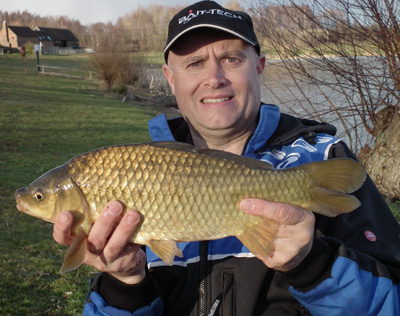 Here at Larford I’m fishing the brilliant Match Lake for a full five hours and I will try to explain my way of thinking and how I would approach an actual match here.
Here at Larford I’m fishing the brilliant Match Lake for a full five hours and I will try to explain my way of thinking and how I would approach an actual match here.
Running line will play a big part and for this I set up a straight lead and pellet waggler. I will also set up a few lines on the pole. The first rig is for the short line, the top 2 plus 2 sections line and this is where I will start my efforts and it is usually good for a few fish before the swim either dies off or the fish back off and you have to chase them out.
If I do have to follow them out I usually look to fish around 10-12 meters. As the depth doesn’t vary much (a few inches at best) I don’t see the value in chasing them out to very long lengths, I am sure if they have pushed away from the short line then I’ll catch them a little closer to my initial starting line, rather than pushing them out to a long line and making life harder for myself.
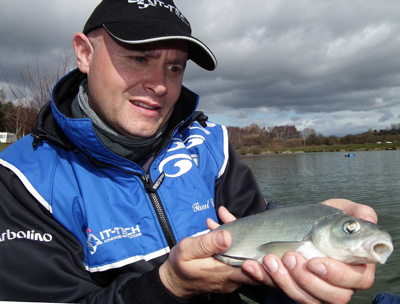 Also, when they have backed off, rather than scratching around chasing fish further out I reach for my lead rod. This line will have been fed from the start with 8mm pellets and should give me a prolonged catching period and this, to me, is much bolder than going further and further out on the pole catching less and less.
Also, when they have backed off, rather than scratching around chasing fish further out I reach for my lead rod. This line will have been fed from the start with 8mm pellets and should give me a prolonged catching period and this, to me, is much bolder than going further and further out on the pole catching less and less.
So, having used the short line to kick the session off I have had a good spell catching plenty of F1s and carp before the skimmers moved in – a sign of there not being that many carp.
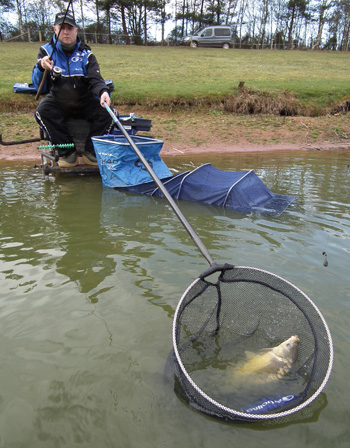 I have simply fed 6mm pellets by hand and used a 6mm Bait-Tech Xpand or a piece of 6mm N-Tice Polony on the hook. Lifting and moving the float induced a few extra bites but the swim was clearly fading and this is when you move from section one of the match to section two – the normally quieter period. If you are to do well you generally have to catch steadily all through the match as any lull is usually met with an ‘also ran’ placing.
I have simply fed 6mm pellets by hand and used a 6mm Bait-Tech Xpand or a piece of 6mm N-Tice Polony on the hook. Lifting and moving the float induced a few extra bites but the swim was clearly fading and this is when you move from section one of the match to section two – the normally quieter period. If you are to do well you generally have to catch steadily all through the match as any lull is usually met with an ‘also ran’ placing.
I pick my bomb rod up and put an 8mm pellet in the hair rigged band; remember this line hasn’t had any fish caught from it and has been fed since the start of the match. This should give me another burst of fish as not only should they be confident on the feed but, as they are away from the bankside disturbance, they should be more settled and prepared to feed.
A lot of the time carp will feed for the sake of it and the noise of pellets entering the water is often enough of a trigger for a few to have a go. I also like to give them a target when I’m fishing so I fish this in conjunction with a cone of softened pellets. This can sometimes give you savagely quick takes and really get the score board ticking again.
With the fish feeling a lot less pressured I should now be able to catch steadily on both straight lead and/or waggler until the witching hour begins. This is the notorious last hour or, period three of the match and this is where most matches are lost or won.
The edge is the obvious place we all target late in a match, and for very good reason: The big girls of the lakes love to patrol around the shallow margins looking for any free feed they might come across. Commercials up and down the country are prime for this as most match anglers will throw a little of their leftover bait in the margins at the end and this is like a dinner bell to the big, greedy residents. Like most other people I love catching the big fish from the edge in the last hour of the match.
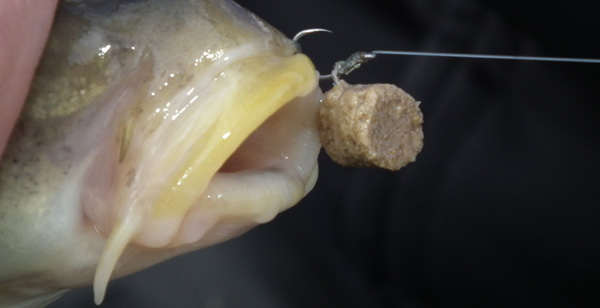
A problem that can happen on pressured waters though is that the fish can get a little riggy. By this I mean unless they are feeding with gusto, especially in very shallow water, they can become rig shy and poles waving over their heads and long stemmed floats can lead to problems hooking fish. Foul hooked fish are a prime example of this and big foul hooked fish are a recipe for disaster that can really scupper your chances of doing well.
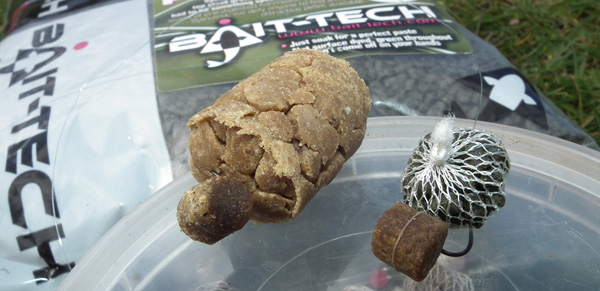
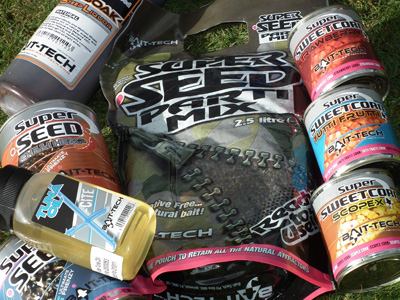 This is the reason I do things very differently from the norm. Most opt for a pellet, corn or meat approach in the edge, which is fine and will catch fish, but I like to use all of these baits – along with lots of other ingredients – to fool wary fish. This is something akin to a carp angler’s spod mix and what this does is to keep the fish guessing. They won’t be used to being caught on a specific hookbait and won’t have chance to become wary of it. It also gives you choice to use lots of different hookbaits over the top to see if there is a preference on the day.
This is the reason I do things very differently from the norm. Most opt for a pellet, corn or meat approach in the edge, which is fine and will catch fish, but I like to use all of these baits – along with lots of other ingredients – to fool wary fish. This is something akin to a carp angler’s spod mix and what this does is to keep the fish guessing. They won’t be used to being caught on a specific hookbait and won’t have chance to become wary of it. It also gives you choice to use lots of different hookbaits over the top to see if there is a preference on the day.
Bait-Tech Parti Mix is something I have been using when edge fishing; the eight item blend of different seeds and pulses is a magnet to carp; the speccy boys swear by it and use buckets of it to pull and hold fish and it was this that led me to give it a go.
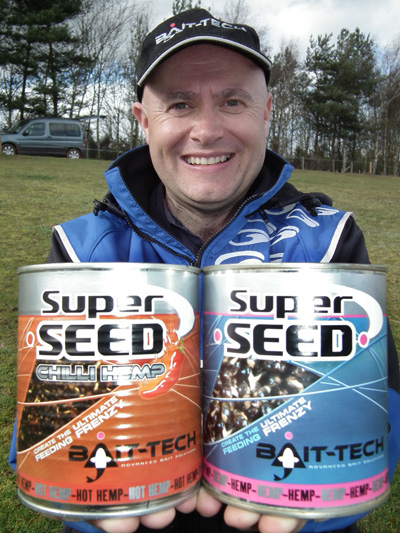 To this I add either Bait-Tech Super Seed hemp or Super Seed Chilli hemp and a tin of corn and some meat samples; a few pellets complete the mix. This mix of particles gives you an amazing carp attractor that fish spend long periods feeding over. Because of the variety of items they become very confident in feeding, much more so than on a standard particle such as pellets and it shows just how the speccy world is really starting to influence the match arena.
To this I add either Bait-Tech Super Seed hemp or Super Seed Chilli hemp and a tin of corn and some meat samples; a few pellets complete the mix. This mix of particles gives you an amazing carp attractor that fish spend long periods feeding over. Because of the variety of items they become very confident in feeding, much more so than on a standard particle such as pellets and it shows just how the speccy world is really starting to influence the match arena.
The session itself was wonderful but as I was on my own things were obviously easier than if it was a match scenario. That said a few things really stood out.
As described I started on short pole directly in front of me with pellets and was soon rewarded with a run of big F1s and odd carp. 40 minutes in and the swim was changing slightly; I was still catching the odd better fish but was getting pestered by skimmers (that may sound a silly comment but here at Larford you definitely need to catch a large amount of carp to win, skimmers won’t win you much at all). With this influx of silvers I made the move and picked up my bomb rod as the pole line had definitely waned and rather than start chasing it I looked for another bold catching spell by picking up the lead.
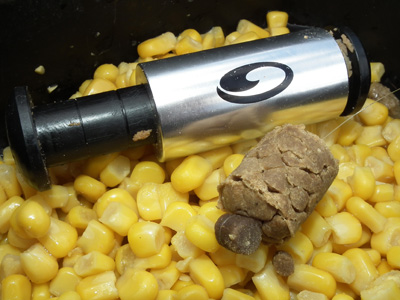 I had been regularly feeding 8mm pellets at roughly 30 turns and soon had a pellet cone mounted on my hooklength ready for action. I cast out into the fed area and wondered what would come. Well, I didn’t wonder for long as I was soon into another angry Larford carp, next cast the tip flew around again. This was exactly what I had hoped for and gave another burst of fish that simply wouldn’t have happened on the pole, even better these were big F1s and ‘proper’ carp.
I had been regularly feeding 8mm pellets at roughly 30 turns and soon had a pellet cone mounted on my hooklength ready for action. I cast out into the fed area and wondered what would come. Well, I didn’t wonder for long as I was soon into another angry Larford carp, next cast the tip flew around again. This was exactly what I had hoped for and gave another burst of fish that simply wouldn’t have happened on the pole, even better these were big F1s and ‘proper’ carp.
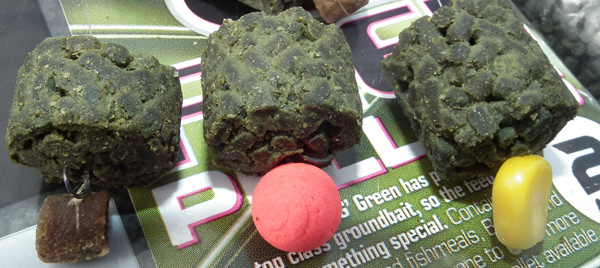
This turned things well and truly in my favour as a notoriously iffy period became a positive catching one. The Garbolino Pellet Press mould was working overtime and I could only just keep up using three different hooklengths. As it wasn’t a match I expected it to be good, this however was special and I continued to catch and, by feeding heavily, the fish just kept coming.
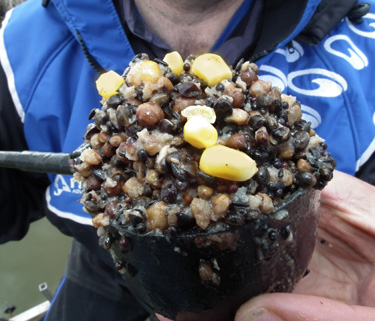 To prove my point I did pick up my short pole line but the skimmers were still dominant so I moved back to the lead. With time ticking and just two hours of the session left I reached for my cup and started feeding the edge line with a full dollop of the particle mixture every ten minutes until I either decide to go on it, or, see fish activity over it.
To prove my point I did pick up my short pole line but the skimmers were still dominant so I moved back to the lead. With time ticking and just two hours of the session left I reached for my cup and started feeding the edge line with a full dollop of the particle mixture every ten minutes until I either decide to go on it, or, see fish activity over it.
With an hour and a half left I started to see signs of fish over the edge line; the odd swirl and tail pattern is a wonderful thing to see in your swim BUT be careful not to chase shadows if you are catching from another line. By this I mean it is far too easy to try and catch fish you can see, spend too long doing it, and then lose out on another method. This is something we are all guilty of and it’s hard to resist doing. Of course this is the exact reason I feed what I do in the edge as the fish aren’t so wary and are keen to feed, hopefully making them easier to catch.
With so much activity I had to have a little look so on went a big grain of Bait-Tech Scopex corn and I lowered the rig in and settled to wait for a bite…nothing happened! Minutes later I was starting to think I should pick the rod up again when a huge tail waved at me, the float dipped sharply and with an almighty eruption I was into my first edge-tempted creature!
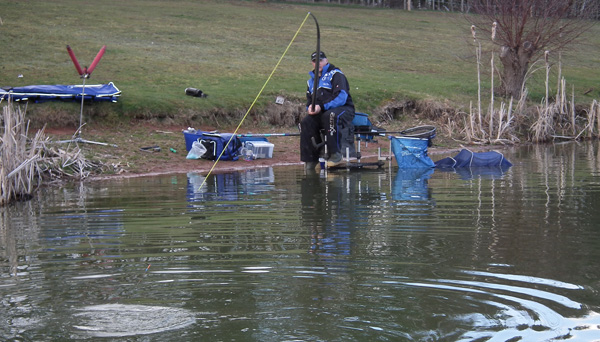
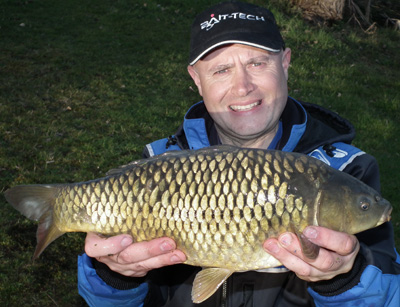 Having played and netted a beautiful 8lb fish I picked up my pot as the disturbance could well have put the other fish off. Another pot of the stodge and another grain of corn and I was in again straight away – they were back already and they wanted it that’s for sure.
Having played and netted a beautiful 8lb fish I picked up my pot as the disturbance could well have put the other fish off. Another pot of the stodge and another grain of corn and I was in again straight away – they were back already and they wanted it that’s for sure.
With this information now telling me to be super aggressive with my feed I was set for a last hour of bagging and it was non-stop all the way to the finish line and by the end of the day I had caught well over 150lb.
It was an awesome day’s fishing; proof that by thinking about where to target when, and with what baits I had managed to keep catching. Next time you’re faced with the catching conundrum break your match – or indeed your session if it’s not a match – down into sections and attack the key periods. If it works for me, it will work for you!











